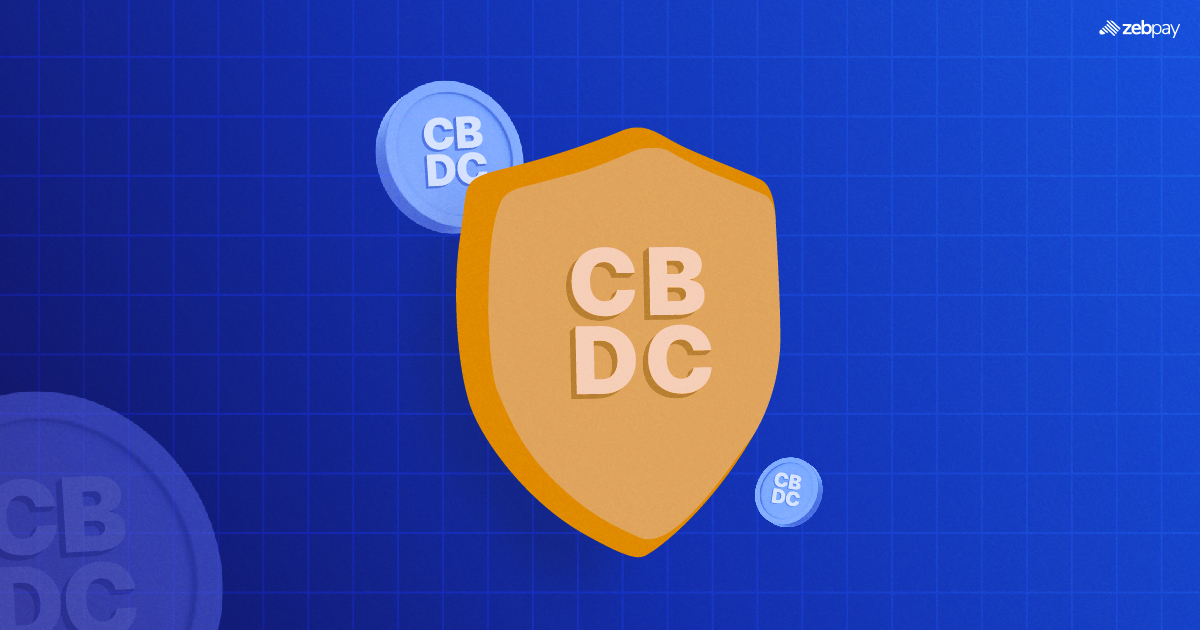Central Bank Digital Currency, or CBDC, adoption has risen steadily over the past years. It has the potential to revolutionize cross-border payments, but a global framework and coordination between countries are vital for its wider adoption. Governments or countries have two significant challenges: first, how and which type of CBDCs to create, and second, a universal infrastructure for different CBDCs to interact. CBDCs can transform cross-border payments if countries can overcome these two challenges.
Cybersecurity is the practice of protecting digital networks from hacks or unauthorized attacks. Businesses and individuals invest heavily in it and are looking for new ways to improve their cybersecurity to protect their digital assets and data from hackers. Cybersecurity has become essential for companies and governments, especially in a progressively digital-centered world. Cybersecurity is not just about protecting against data breaches but also about maintaining customer trust, preventing legal actions, and protecting reputations.
Countries are increasingly adopting CBDCs into their mainstream economic and financial systems. These CBDCs are accumulating sensitive user data at an unprecedented rate. Sensitive data in the wrong hands can lead to breaches of private security details and the loss of money. CBDCs built without robust security protocols can lead to even more privacy and security threats in the financial system.
Understanding CBDCs
CBDCs are not pegged to a physical commodity and are digital forms of a country’s currency. They are issued by the central banks, which are responsible for setting monetary policies and supporting financial services. They can provide a secure infrastructure for online payments and remittances. CBDCs can be integrated into existing payment systems and used for online and offline payments. As mentioned earlier, they can transform cross-border payments, a challenge for fiat money systems. Another vital advantage of CBDCs is that they can provide financial services to unbanked people.
On the other hand, CBDCs can lead to increased surveillance of user payments, raising privacy concerns. There are risks associated with its integration with the current transaction systems. Additionally, the implementation of CBDCs could be a complex and costly process.
What Security threats can CBDCs possibly face?
Online or cyber-attacks are malicious attacks by criminals attempting to access computer networks to steal sensitive information. Most global organizations are experiencing cyberattacks at an increasing rate each year. These online attacks are also increasingly sophisticated, and organizations must implement the latest and most upgraded security precautions and firewalls to keep their precious data safe.
CBDCs increase the centralization of data as they store all the transaction data of citizens in a centralized data repository. This ledger can contain sensitive information like user digital account credentials, which can be financial data of the entire country. Phishing attacks have skyrocketed and are growing increasingly every year. Some phishing attacks download software to harvest user credentials, while others prompt users to enter sensitive information. Some criminals can also impersonate CBDC support teams and con users into allowing them to control their accounts or steal login credentials. Cybersecurity threats can be mitigated through technical design choices, but every CBDC design has trade-offs regarding security, performance, usability, and privacy.
Read more: Pros and Cons of CBDCs
Vital Components of CBDC Cybersecurity
Robust encryption techniques are a vital component of CBDC cybersecurity. End-to-end encryption can ensure only involved parties can access transaction data, preventing unauthorized or illegal access. CBDC cybersecurity systems can implement anonymous transaction features, where users’ transaction details are not linked to their identities. Digital transaction anonymity can be achieved through blind signatures and zero-knowledge proofs.
Another vital component of CBDC cybersecurity is implementing robust AML/KYC procedures to create digital wallets. Many countries are adopting a two-tier system of CBDCs where they exist in the current traditional system. Commercial banks can take on the responsibility of completing the AML and KYC processes. They link the unique identifier to the digital wallet and can enforce a robust AML/KYC process.
Regulatory Frameworks and Best Practices

Countries take a fragmented approach to building their CBDCs, which can result in cross-border cybersecurity issues. Understandably, countries are first focusing on domestic use, but large economies can play a role in framing universal regulations to safeguard citizens from cross-border cybersecurity risks. Policymakers should develop rules where the CBDC is interoperable with its current financial infrastructure. These regulations can increase the resilience of the current economic infrastructure.
Countries should coordinate and work with each other to form a universal CBDC regulation and standard setting to protect themselves from cyber threats, especially from cross-border payments. Countries should learn from past security threats to their existing systems and build robust security systems. They should engineer security features from the beginning for all CBDC use cases. Security features like continuous testing, identity authentication, and regular audits should be implemented to counter cyberattacks.
Building Resilient CBDC Systems
Central banks must combat cyberattacks on an unprecedented scale when deploying CBDCs. So it is imperative to build resilient CBDC systems to protect against continuous cyber threats. Some strategies to build a resilient system include securing millions of endpoints connecting users, businesses, and banks to form a great web of online connections. Another method can involve providing intermediaries who can better anticipate fraud and other financial cyberattacks. Central banks should also develop a system to monitor global security threats in real-time, quickly respond to threats and develop plans for recovery after experiencing a cyberattack.
CBDCs must implement robust security measures to defend themselves from unauthorized or illegal access, online threats, and hacks. They must deploy security measures like robust encryption protocols, secure key management, and multi-factor authentication. CBDC infrastructures should be carefully planned to ensure resiliency against network disruptions or system failures. They can also implement transaction monitoring mechanisms to prevent illicit activities by criminals. They should also go through periodic audits to support regulatory compliance.
Balancing Security and Accessibility
The user interface of CBDC applications should be easy to use to complete a transaction. Central banks should incorporate features that facilitate easy accessibility, inclusion, and simplicity when designing the user interface of CBDC applications. They should also develop CBDC systems compatible with various devices, such as smartphones and other digital platforms, to ensure accessibility across different user segments. CBDC can provide financial services to the unbanked population by making its services accessible through a simple internet connection.
Future Trends and Innovations
Governments are continuously exploring CBDCs’ benefits to their financial systems and economies. They are exploring the adoption of CBDCs to deliver monetary policies, drive digital innovation, and increase financial inclusion. As technology evolves, new cyberattacks will emerge, and online attacks will become even more complex. Countries should have robust and up-to-date security protocols to mitigate these online attacks. Developers are working to develop new security systems to mitigate quantum security attacks. Recently, countries have given importance to data protection and are continuously upgrading encryption systems to withstand evolving security attacks.
Read more: CBDC vs Crypto
Summary and Conclusions
Central banks are exploring the best and most secure methods to operate in an increasingly digital world. CBDC adoption has many benefits and offers new ways of working for financial institutions and other participants in the economy. Central banks should build robust CBDC systems that can withstand various evolving cyberattacks. They should also develop a risk management system and security-related policies. They need to replicate the integrity and technical resilience of the existing financial system to gain public confidence for more adoption.
To stay up to date with the latest crypto news, visit ZebPay blogs. Click on the button below to trade on ZebPay.
Frequently Asked Questions (FAQs)
What is a CBDC, and how does it differ from traditional currency?
CBDC is a digital form of a country’s traditional currency and is not pegged to a physical commodity.
How can CBDCs enhance digital transaction security?
CBDCs can enhance digital transaction security through features like multi-factor authentication and end-to-end encryption.
What are the major cybersecurity risks associated with CBDCs?
The major cybersecurity risks with CBDCs is that most public data is saved in a central repository which can be a prime target for cybercriminals.
How are central banks addressing the challenges of CBDC cybersecurity?
Central banks are building robust CBDC infrastructure while implementing strong security measures like end-to-end encryption.






